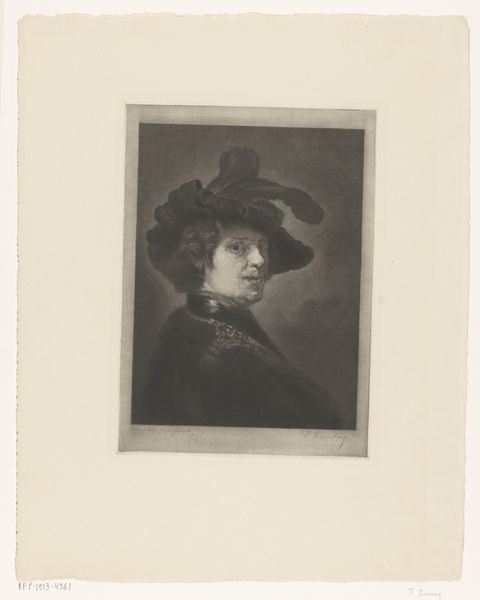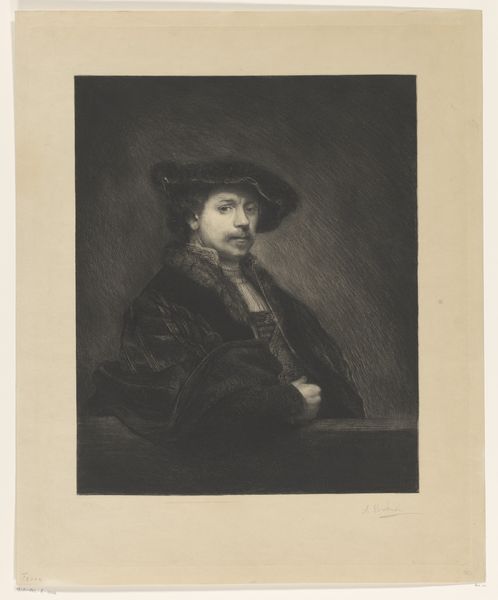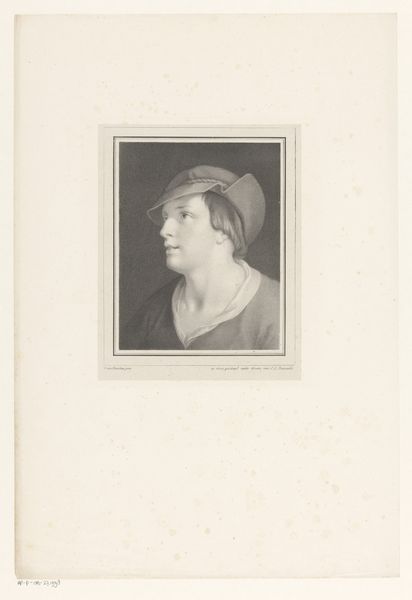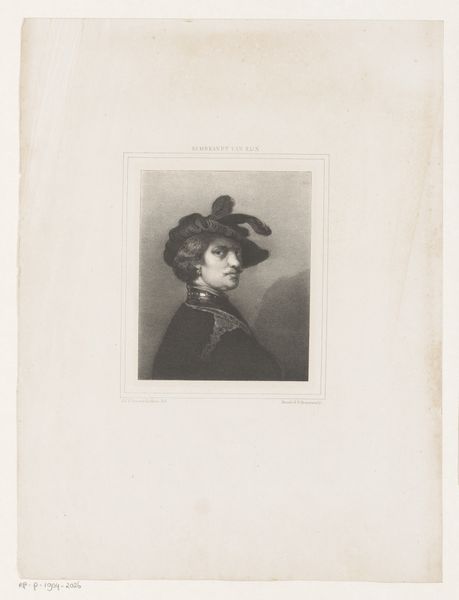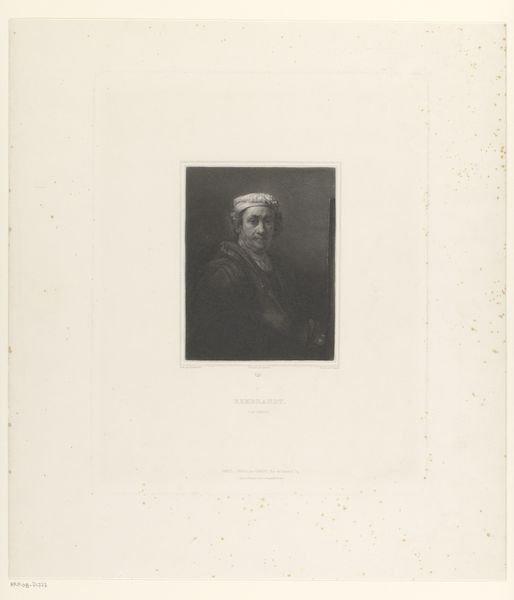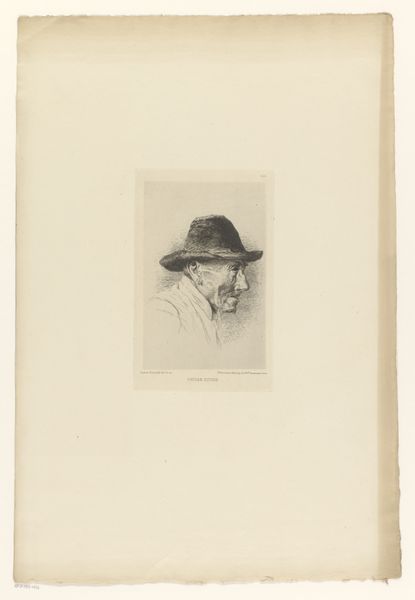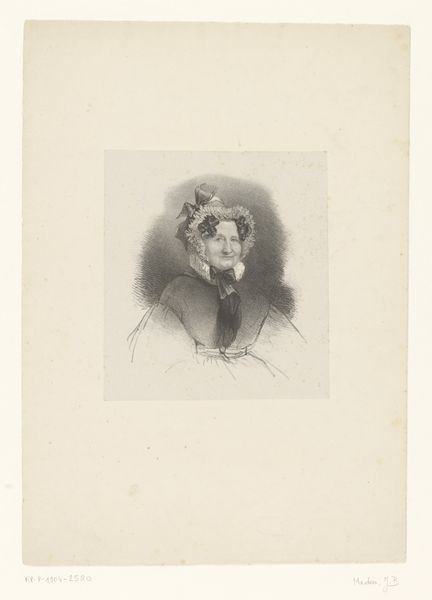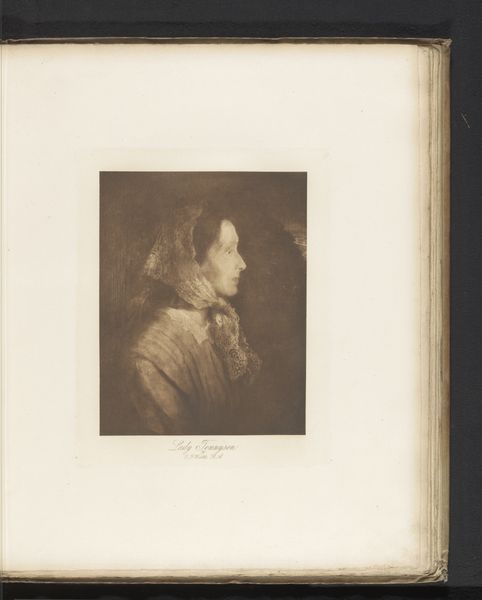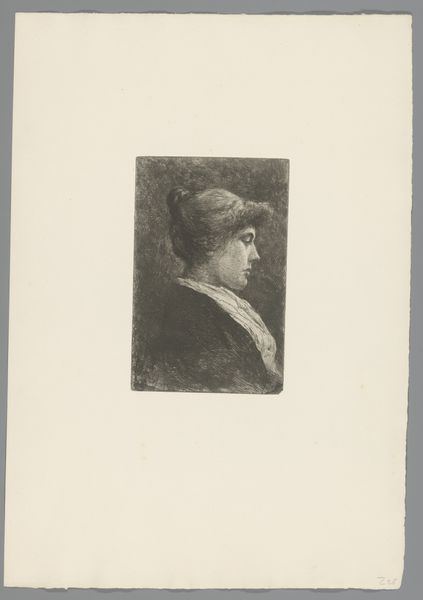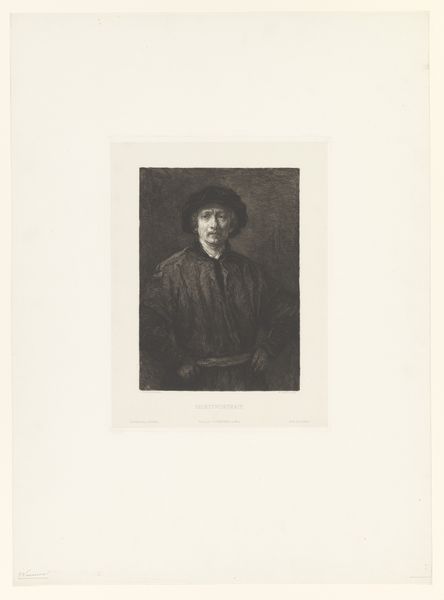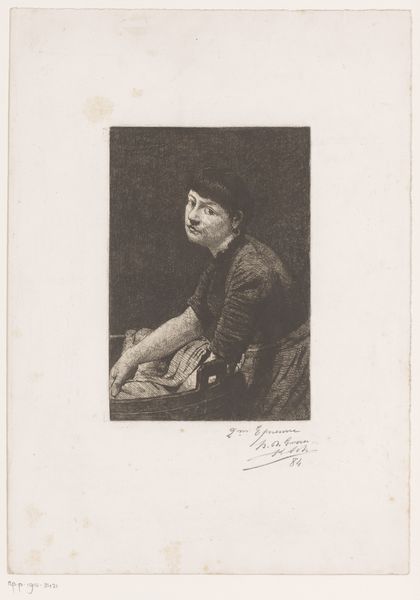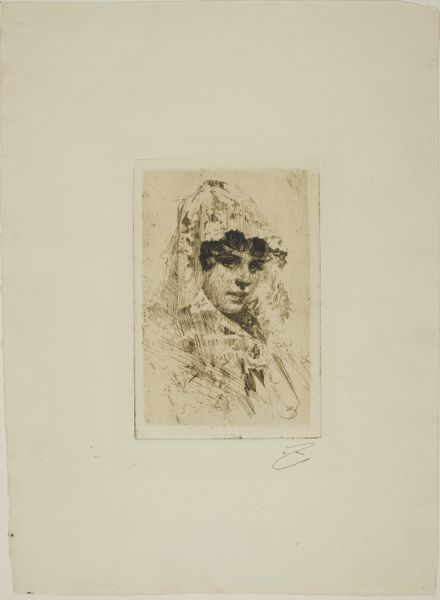
drawing, lithograph, print, paper
#
portrait
#
drawing
#
lithograph
# print
#
paper
#
romanticism
Dimensions: 5 5/8 x 3 1/2 in. (14.29 x 8.89 cm) (plate)9 7/8 x 7 1/2 in. (25.08 x 19.05 cm) (sheet)
Copyright: Public Domain
Curator: Alfred Johannot's "Essais a la manière noire," dating back to around 1831, greets us. It's a lithograph printed on paper and held by the Minneapolis Institute of Art. Editor: Immediately, I'm struck by how melancholic it is. The muted tones, the slight downward gaze of the subject, it feels very inward. Curator: Indeed. Lithography was booming in the Romantic era and allowed for experimentation like this. "À la manière noire," essentially means it's a mezzotint imitation created through lithography, granting that rich, velvety darkness. It was meant to reproduce the effect of much more laborious and traditional mezzotint techniques that preceded lithography. Editor: Right, the democratization of art production. That allows more people—perhaps those outside traditional art institutions—to represent themselves and their communities. Does this choice speak to how he saw himself? A portrait produced with the spirit and intent of broader accessibility and distribution? Curator: It's a valid question. Lithography allowed images to circulate more widely than ever before, escaping the confines of the elite salons, which could represent a more inclusive direction for artistic expression. Editor: This man, maybe the artist himself, seems contemplative. It feels less about outward appearance and more about conveying an inner world. The high collar and ruffled hat might signal his position in society, but it’s the intensity of his expression I’m most drawn to. Curator: It embodies the Romantic ideal of emphasizing emotion and individualism over strict representation. We must also remember that portraiture in this era often functioned as a display of status, yet his print introduces ambiguity around its subjects own views on privilege. Editor: So even in adopting artistic traditions from before, his print allows wider viewership access to his portrait. How does it resonate today when these societal structures still affect what art is considered important or who has access? Curator: This artwork can stimulate critical dialogues around representation, challenging whose stories get told and preserved within art institutions. Its impact, hopefully, inspires a renewed urgency around these questions. Editor: A poignant reminder that even artistic expression is deeply interwoven with societal context.
Comments
No comments
Be the first to comment and join the conversation on the ultimate creative platform.
